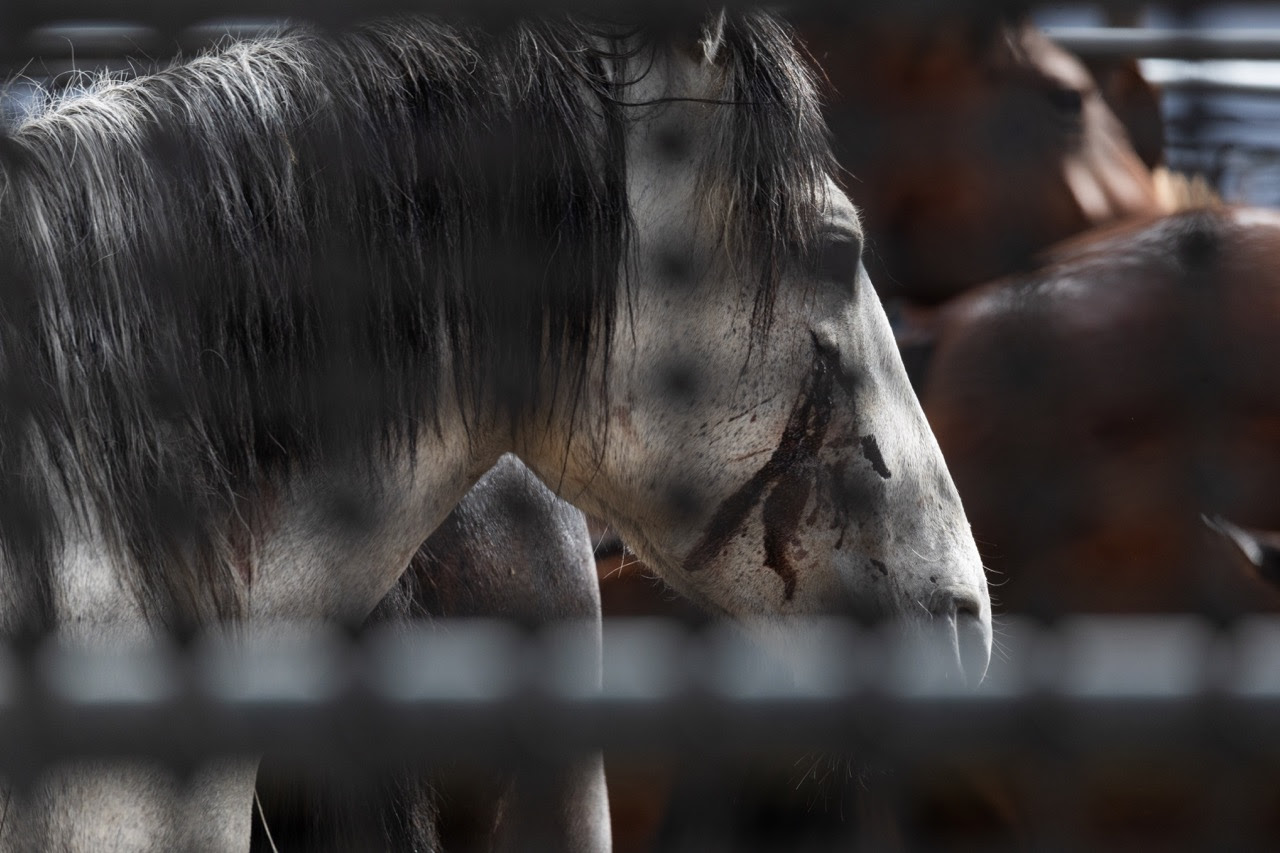The cost of freedom lost
The following is from the American Wild Horse Campaign:
Federal helicopter roundups have paused for the next few weeks. Before they resume in September, it’s important to take a moment and reflect on the staggering cost of freedom lost so far for America’s wild horses and burros. But first, will you chip in to help fund our efforts to document and shine a light on the cruel reality our beloved wild horses and burros face at the hands of the government?
| CHIP IN TO PROTECT WILD HORSES |
Since July 1, 2024, 6,629 wild horses and burros, many of whom are young foals, have been captured as a result of seven dangerous roundup operations conducted by the Bureau of Land Management (BLM). So far, 89 deaths have been reported.
Most recently, roundups in the Sulphur, Marietta and South Steens Herd Management Areas (HMAs) have concluded. During these three roundups alone, 1,612 horses and burros were captured and 19 animals lost their lives. In the South Steens, where 9 horses died of traumatic injuries or were euthanized by the BLM, the agency actually increased its capture goal by 120 horses on the last day of the roundup.

| CHIP IN TO PROTECT WILD HORSES |
During the Blue Wing roundup 1,655 wild horses and burros were captured and a shocking 42 died. This helicopter operation was particularly gruesome as AWHC field observers documented shocking abuse during it, including capturing video footage of a collapsed horse being struck repeatedly in the head by BLM contractors. And in Wyoming’s North Lander roundup, a staggering 2,577 wild horses were captured, including 471 foals.
This has to stop. Over the course of the next month, over 1,000 more wild horses and burros are slated for removal. That means more horses and burros terrorized, more families broken apart, more life-threatening injuries, and more deaths
| CHIP IN TO PROTECT WILD HORSES |
Not only is this cruel and unscientific system costing these animals their lives and their freedom, it’s also costing taxpayers hundreds of millions of dollars each year. According to the BLM, the Wild Horse and Burro Program cost taxpayers $157.8 million in Fiscal Year 2023. For the Blue Wing Complex roundup alone, the contractor hired to conduct the brutal operation was paid $624,870.
We know there’s a better way. We’re proving just that through our successful and scientifically-backed PZP fertility control program, which only costs $30 per vaccine, and our groundbreaking Land Conservancy Project. These innovative AWHC programs show that there’s a more humane and cost-effect alternative to protect and conserve our nation’s wild horses and burros and the land they roam other than cruel and costly helicopter roundups.
We’re also fighting to hold the BLM accountable for abuses against wild horses and burros by deploying our humane observers to every single planned helicopter roundup of the summer so far to ensure the public knows what is happening to these iconic animals.
It’s up to us to continue fighting for the future of our wild herds, but we can’t do it alone. Your support is critical to powering this vital work. And by signing up for a recurring monthly gift, you can help us do even MORE to keep wild horses and burros free on the lands they call home year-round. Will you take your support to the next level and become an AWHC recurring donor today?
| BECOME A RECURRING DONOR |
Thank you,
Team AWHC











 Photo by Tandin Chapman
Photo by Tandin Chapman Photo by Nenah Demunster
Photo by Nenah Demunster Photo by Steve Paige
Photo by Steve Paige





